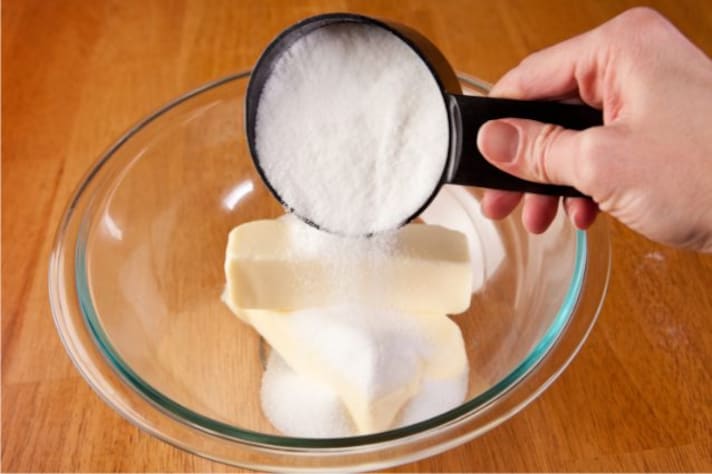
When making a cake or any type of dessert, one of the main components is always the sweetener. White sugar, or granulated sugar, is often the go-to choice in every recipe, but it's not always the best fit. Sometimes recipes call for brown sugar, coconut sugar, or other types of sweeteners and sugars you've never heard about. Does it really make a difference? How do you know when to use which?
Why Does Sugar Matter In Baking?
Sugar isn't just about sweetness; it plays multiple roles in baking. It impacts the texture, color, and even the moisture content of your baked goods. Granulated sugar helps to create a light, airy structure in cakes and cookies by incorporating air during creaming. It also caramelizes at high temperatures, adding a golden hue and rich flavor. Different sugars have unique properties that can alter the final outcome of your recipe, making the choice of sugar more critical than it might initially seem.

Granulated Sugar is The Classic Choice
Granulated sugar, also known as white sugar, is the most common sweetener used in baking. It's highly refined and versatile, dissolving easily into batters and doughs. This sugar is perfect for creating light and fluffy textures, like in meringues or sponge cakes. It also plays a crucial role in browning and crisping cookies. Think of granulated sugar as the dependable friend who’s always up for anything.
Brown Sugar, Instead, is a Flavor Booster
Brown sugar is essentially white sugar with molasses added back in. It comes in light and dark varieties, each imparting a different level of caramel-like flavor and moisture. Light brown sugar is great for recipes where you want a subtle molasses flavor, like in chocolate chip cookies. Dark brown sugar, with its richer taste, is perfect for gingerbread and spice cakes. Plus, it keeps baked goods softer for longer. It’s like the friend who brings depth and warmth to every conversation.
Powdered Sugar is Way Smoother
Also known as confectioners' sugar, powdered sugar is granulated sugar that has been ground to a fine powder and mixed with a bit of cornstarch to prevent clumping. It dissolves quickly and is ideal for icings, frostings, and glazes, providing a smooth, glossy finish. It’s the finishing touch, the icing on the cake—literally.

Coconut Sugar is an Exotic Alternative
Coconut sugar is derived from the sap of coconut palm trees and has a lower glycemic index than granulated sugar, making it a slightly healthier option. It has a caramel-like flavor similar to brown sugar and can be used as a one-to-one substitute in most recipes. Coconut sugar shines in recipes where a hint of caramel is desired without overpowering the other flavors. Think of it as the exotic friend who brings a touch of the tropics to your gatherings.
Honey, Maple Syrup, and Other Liquid Sweeteners
Liquid sweeteners like honey and maple syrup add unique flavors and moisture to baked goods. Honey is sweeter than sugar and has antimicrobial properties, while maple syrup offers a distinct, robust flavor. These sweeteners are excellent for moist cakes, breads, and muffins. However, because they are liquids, they can alter the texture of your final product, so adjustments to the recipe may be necessary. These are your adventurous friends who always have a unique story to tell.

How to Choose What Sugar is Best When Baking
So, how do you choose the right sugar for your baking? Consider the role sugar plays in your recipe—are you looking for a light and airy texture, a deep caramel flavor, or a glossy finish? Also, think about the overall flavor profile you want to achieve. For a classic vanilla cake, granulated sugar might be your best bet, while a batch of rich gingerbread cookies could benefit from the robust flavor of dark brown sugar. Don’t be afraid to experiment and combine different sugars to find your perfect sweet spot.
;Resize,width=767;)
